Products
Products Resources
Purity test application note
An application note from Analytik Jena AG describes a purity test of chemical reagents using the example of As determination in sulfuric acid with the HydrEA hydride–graphite furnace technique. According to the publication, the method is suited for analysis of hydride-forming elements. Analytik Jena AG, Jena, Germany;
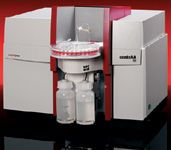
Spectrometer
The AvaSpec-ULS2048XL spectrometer from Avantes is designed to combine the quantum efficiency of a back-thinned CCD detector with the electronic control required for high-speed applications such as LIBS and pulsed light source measurements. According to the company, the instruments' detector has 2048 pixels, each measuring 14 × 500 µm. Avantes, Broomfield, CO;

Fiber-optic Raman probes
FiberTech Optica's compact fiber-optic Raman probes are designed to provide enhanced throughput and collected Raman signal quality. According to the company, design features include high collection efficiency (f/2) optics, internal filtering, about 4 mm working distance, and assembly with no moving parts. FiberTech Optica, Kitchener, Ontario, Canada;

Diode source
Horiba's DeltaDiodes diode source is designed to use laser diode and LED technology to generate short optical pulses down to 50 ps with repetition rates up to 100 MHz over a range of wavelengths. According to the company, the system has a USB interface and hot-swappable, plug-and-play heads. Horiba Scientific, Edison, NJ;

Polarizer
Moxtek's 3D enabling pixilated polarizer is designed for use with the visible, UV, and IR light spectrum. According to the company, the polarizer allows the user to obtain 3D information and gather Stokes information, overlaid real-time into an image. Moxtek, Orem, UT;

IR gas cell
The 2.4 m IR gas cell from PIKE is designed with a metal body (nickel-coated aluminum), diamond-turned optics, and tool-less assembly and disassembly. According to the company, features include small volume and a heated 200 °C option for analysis of samples containing low-boiling-point components and water vapor. PIKE Technologies, Madison, WI;

Hyperspectral imaging camera
Horiba Scientific's Verde hyperspectral imaging camera is designed to measure complete image and spectral information simultaneously. According to the company, the camera can capture the complete spectrum of every point in an image in a single measurement in 3 ms. The camera reportedly uses a 2-D dispersion element to capture all spatial and spectral information, and no averaging or repeated experiments are required. The camera has no moving parts. Possible applications are field work and industrial quality control, including plasma monitoring in semiconductor foundries, color quality control for fabrics, paints, foods, computer monitors, and televisions. Horiba Scientific, Edison, NJ;

EDXRF elemental analyzer
Rigaku's benchtop energy dispersive X-ray fluorescence spectrometer is designed as a compact elemental analyzer that can deliver quantitative determination of sodium to uranium in solids, liquids, powders, and thin films. According to the company, the analyzer has a single-position sample stage with three analysis spot size options — 3 mm, 8 mm, and 14 mm — that are changeable. Rigaku Corporation, The Woodlands, TX;

EDXRF spectrometer
Shimadzu's EDX-LE energy dispersive X-ray fluorescence spectrometer is designed for screening elements regulated by RoHS/ELV directives. According to the company, the spectrometer is equipped with automated analysis functions and a detector that does not require liquid nitrogen. Shimadzu Scientific Instruments,
Columbia, MD;

Variable-pathlength FT-IR cell
International Crystal's heated variable-pathlength cell is designed with the ability to be heated to 200 °C and comes with a programmable temperature controller with a RS-232 serial cable computer interface. According to the company, the cell back plate is water-cooled, and the body and vernier scale adjustment on the front of the cell are insulated to enable in situ variation of the pathlength while the cell is situated in the sample compartment of an FT-IR spectrophotometer. International Crystal Laboratories, Garfield, NJ;

Polymer identification and quantification
B&W Tek's PolymerIQ system for identification and quantification of polymers combines the company's iRaman high-resolution portable Raman system with Gnosys' chemometric software. According to the company, the software enables users to perform multivariate statistical analysis to relate spectral information to the chemistry, properties, and metrics of interest. B&W Tek, Newark, DE;

Hyperspectral imaging system
The HI 90 hyperspectral imaging system from Bruker Optics is designed as a remote chemical sensing system that permits detection, identification, and quantification of hazardous gas clouds. According to the company, the system allows remote operation several kilometers from the area of interest.
Bruker Optics, Billerica, MA;

ICP-MS system
PerkinElmer's NexION 300 ICP-MS system is designed to provide the benefits of a collision cell and the detection limits of a true reaction cell. According to the company, the instrument can be run in three different modes: standard, collision, and reaction. A scanning quadrupole reportedly removes targeted interferences and reaction products in the universal cell. PerkinElmer, Waltham, MA;

ICP-MS system
Thermo Fisher Scientific's iCAP Q ICP-MS system is designed to provide increased throughput to enable laboratories to cut analysis times by up to 50%. According to the company, the system features an interface that enables one-click setup and allows users to go from standby to performance-qualified analysis with the push of a button. Thermo Fisher Scientific, Inc., San Jose, CA;

Raman analyzer
The ASSUR handheld Raman analyzer for raw material verification from Enwave Optronics is designed to be fully 21 CFR Part 11 compliant for GMP requirements. According to the company, it is suitable for the analysis of pharmaceutical compounds and industrial chemicals and for applications requiring high-speed Raman analysis. Enwave Optronics, Inc., Irvine, CA;
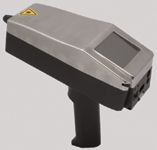
Wine standards
Certified reference materials for trace metals analysis in a natural wine matrix are available from Spex Certiprep. The company is reportedly accredited by UL DQS for ISO 9001 and accredited by A2LA for ISO 17025 and ISO Guide 34. Spex Certiprep, Metuchen, NJ;
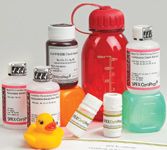
XRF kit
Amptek's XRF Kit is designed to help users begin performing elemental analysis via X-ray fluorescence. According to the company, the kit includes the company's X-123 complete spectrometer with an SDD or Si-PIN detector; a mini-X USB controlled X-ray tube; XRF-FP QA software; a mounting plate; and a test sample.
Amptek Inc., Bedford, MA;

Automated circular dichroism spectrometer
The Chirascan-plus ACD spectrometer from Applied Photophysics is designed to provide flexible, robust automation and simultaneous measurement of circular dichroism and absorbance. According to the company, the spectrometer's software provides automation control, application development, and integrated spectroscopic analysis tools. Applied Photophysics Ltd., Leatherhead, UK;

Mercury analyzers
The Hydra II mercury analyzers from Teledyne Leeman Labs are designed to provide configuration flexibility. According to the company, the analyzers can be configured to conduct the analysis of liquids by sample digestion followed by cold vapor atomic absorption or cold vapor atomic fluorescence, and the direct analysis of solid or semisolid sample matrices through thermal decomposition followed by cold vapor atomic absorption. Teledyne Leeman Labs, Hudson, NH;

Diffraction gratings
Zeiss mechanically ruled or holographically recorded diffraction gratings from Hellma are designed using holographic exposure systems and ultrahigh-precision ruling engines. According to the company, the gratings are used with monochromators, spectographs, spectrophotometers, dye lasers, and other laser types.
Hellma, Plainview, NY;
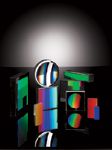
ICP-MS system
The Agilent 8800 triple-quadrupole ICP-MS system is designed to provide improved performance compared with single-quadrupole ICP-MS and to provide MS-MS operation for interference removal in reaction mode. According to the company, the system can be used to analyze elements in life-science, soil, rock, and plant materials. The system reportedly also can be set up to operate like a single-quadrupole ICP-MS system. Agilent Technologies, Santa Clara, CA;

Microvolume UV spectrophotometer
Shimadzu's BioSpec-nano UV spectrophotometer is designed to be a dedicated instrument for reproducible concentration determination of nucleic acids and proteins. According to the company, the instrument requires 1 µL (pathlength: 0.2 mm) or 2 µL (pathlength: 0.7 mm) of sample, which is pipetted onto the measurement plate, and for ultrasmall sample volumes, no standard rectangular cell is needed. Shimadzu Scientific Instruments, Columbia, MD;

FT-NIR analyzers
Precalibrated FT-NIR analyzers from Thermo Fisher Scientific feature the Antaris II FT-NIR analyzer and are designed for feed and ingredient analysis in agriculture and for flour and milling analysis in the food processing industry. According to the company, the analyzers can analyze multiple components simultaneously without consumables, chemicals, or disposables. Thermo Fisher Scientific, Inc., Madison, WI;

XRD analyzer
Rigaku's MiniFlex general-purpose X-ray diffractometer is designed to perform qualitative and quantitative analysis of polycrystalline materials. According to the company, the benchtop instrument is available in two variations — a 600-W model and a 300-W model that does not require an external heat exchanger.
Rigaku Corporation, The Woodlands, TX;

Vis–NIR spectrometer
The Maya2000 Pro-Vis–NIR system from Ocean Optics is designed as a back-thinned 2D FFT-CCD spectrometer with 80% peak quantum efficiency. According to the company, the device has a low-etalon, scientific-grade detector that provides high quantum efficiency from ~400 nm to 1100 nm.
Ocean Optics, Dunedin, FL;
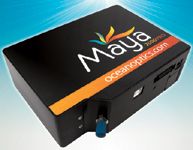
Mircowave plasma–atomic emission spectrometer
The model 4100 microwave plasma–atomic emission spectrometer from Agilent is designed to run on air. According to the company, the device uses a nitrogen-based plasma that runs on air and does not require external cylinder connections or gases. Agilent Technologies, Santa Clara, CA;

Infrared filters
Infrared filters from CVI Melles Griot are manufactured using a sputter coating process and are designed for durability and environmental resistance. According to the company, the filters are optimized for peak transmission and blocking. The filters can be used for applications such as gas analyzers, nondispersive, or Fourier-transform instruments, spectrometers, and biomedical devices. CVI Melles Griot, Albuquerque, NM;

Dichroic shortpass filters
Edmund Optics' Techspec dichroic shortpass filters are designed for a 45° angle of incidence. According to the company, light rejected by the filter is reflected at 90°. The filters reportedly feature low polarization dependence, broad spectral ranges, and a precision fused-silica substrate. The filters can be used in fluorescence applications and as spectral beamsplitters. Edmund Optics, Barrington, NJ;

Photovoltaic measurement system
Newport Corporation's Oriel IQE-200 photovoltaic cell measurement system is designed for simultaneous measurement of the external and internal quantum efficiency of solar cells, detectors, and other photon-to-charge converting devices. The system reportedly splits the beam to allow for concurrent measurements. The system includes a light source, a monochromator, and related electronics and software. According to the company, the system can be used for the measurement of silicon-based cells, amorphous and mono/poly crystalline, thin-film cells, copper indium gallium diselenide, and cadmium telluride.
Newport Corporation, Irvine, CA;

Chemical reaction monitor
The MB-Rx in-situ chemical reaction monitor from ABB Analytical Measurements is designed for use in laboratories and pilot plants. According to the company, the monitor is a plug-and-play system that provides real-time information about chemical or biochemical reaction kinetics and parameters. Data reportedly are collected with an insertion probe and can be analyzed via a software interface. ABB Analytical Measurements, Quebec, Canada;

Dual laser source Raman module
PD-LD's LS-2 LabSource benchtop Raman module has two laser sources. According to the company, the laser sources are VBG-stabilized, and are available in standard and custom wavelengths. When the two laser sources' wavelengths are closely spaced together, the module reportedly is capable of performing surface enhanced Raman differential spectroscopy. PD-LD, Inc., Pennington, NJ;

Ruling engines
Optometrics reportedly has upgraded its three ruling engines. According to the company, its premier ruling engine has been outfitted with interferometric, thermal, and electronic control systems and is driven through a computer-controlled operation, allowing for ghost-free UV–vis rulings and custom rulings at wavelengths ranging from UV to far IR. Optometrics, Ayer, MA;


LIBS Illuminates the Hidden Health Risks of Indoor Welding and Soldering
April 23rd 2025A new dual-spectroscopy approach reveals real-time pollution threats in indoor workspaces. Chinese researchers have pioneered the use of laser-induced breakdown spectroscopy (LIBS) and aerosol mass spectrometry to uncover and monitor harmful heavy metal and dust emissions from soldering and welding in real-time. These complementary tools offer a fast, accurate means to evaluate air quality threats in industrial and indoor environments—where people spend most of their time.
NIR Spectroscopy Explored as Sustainable Approach to Detecting Bovine Mastitis
April 23rd 2025A new study published in Applied Food Research demonstrates that near-infrared spectroscopy (NIRS) can effectively detect subclinical bovine mastitis in milk, offering a fast, non-invasive method to guide targeted antibiotic treatment and support sustainable dairy practices.
Smarter Sensors, Cleaner Earth Using AI and IoT for Pollution Monitoring
April 22nd 2025A global research team has detailed how smart sensors, artificial intelligence (AI), machine learning, and Internet of Things (IoT) technologies are transforming the detection and management of environmental pollutants. Their comprehensive review highlights how spectroscopy and sensor networks are now key tools in real-time pollution tracking.